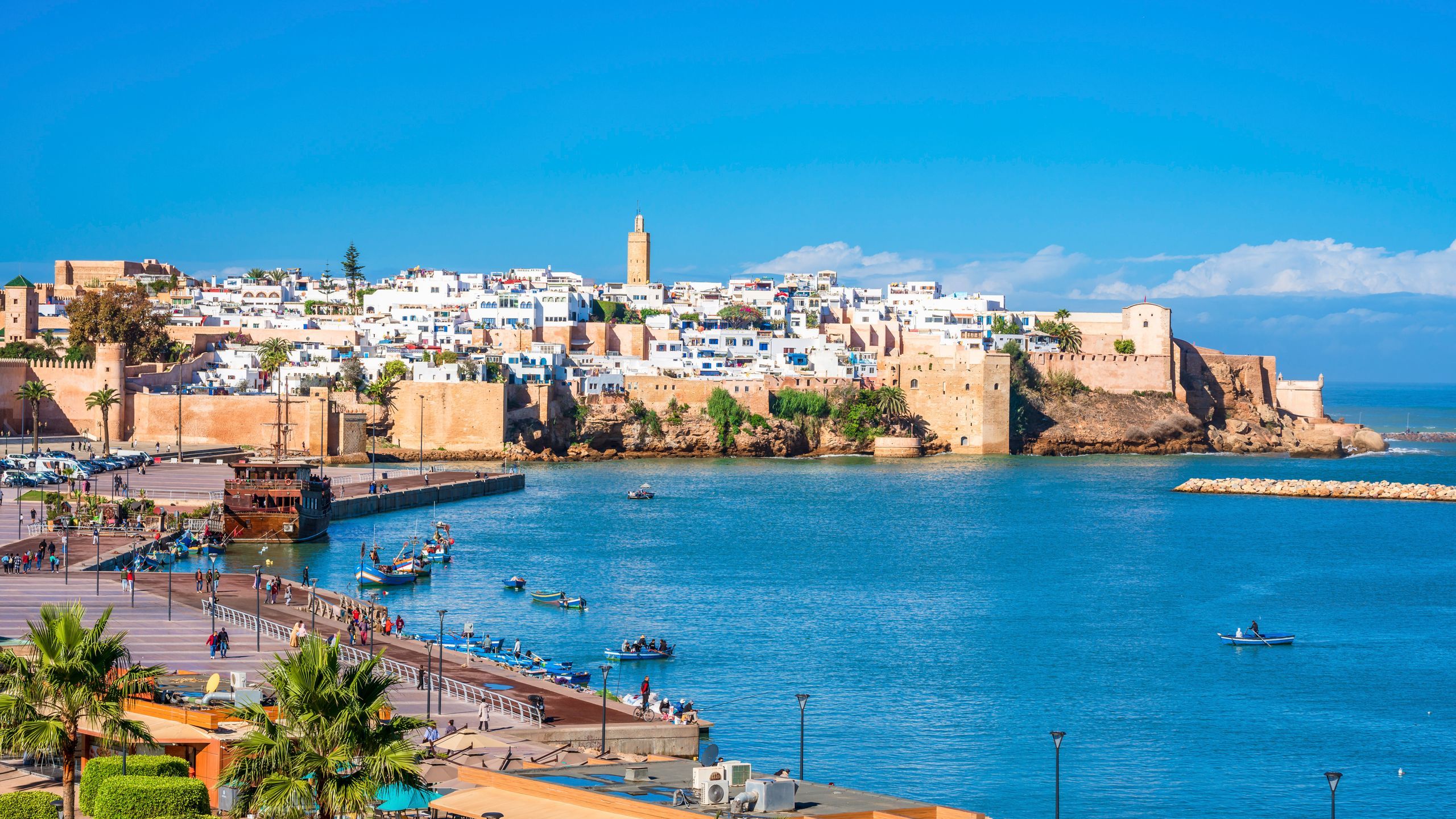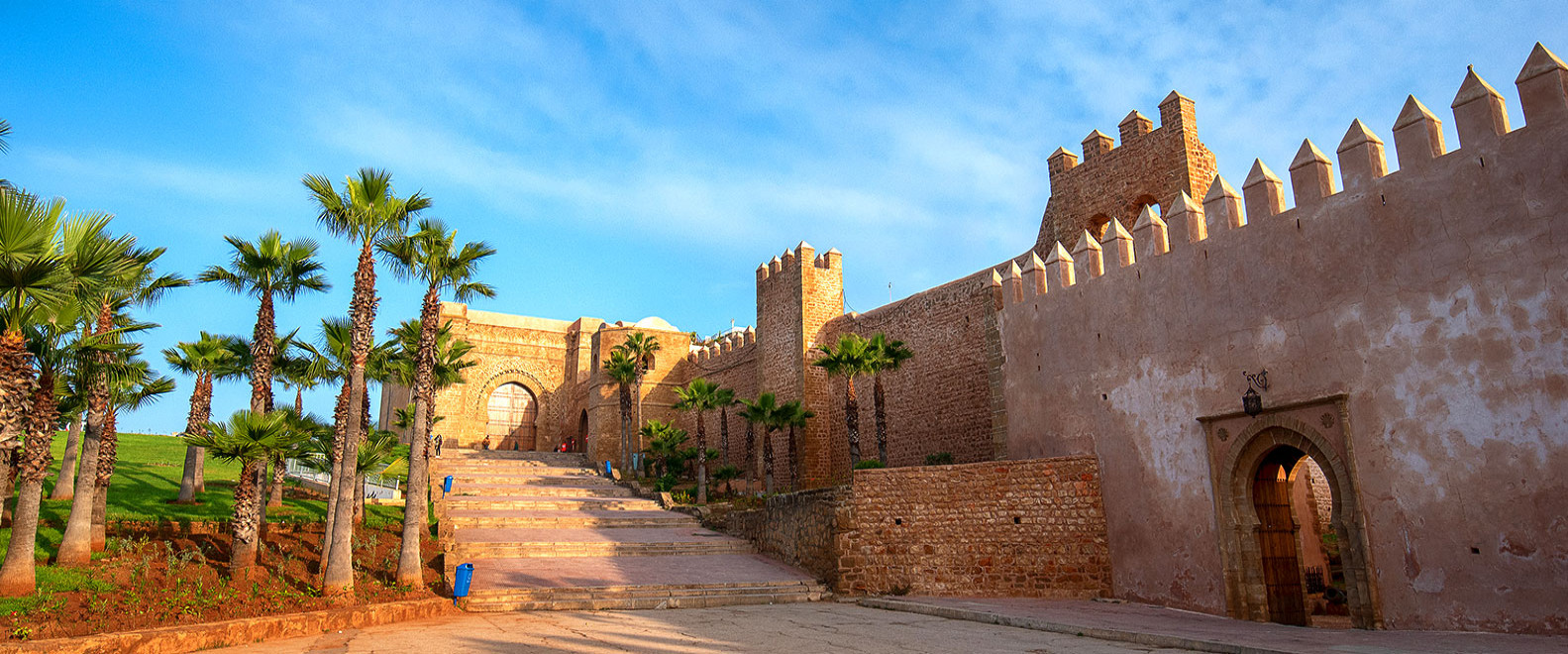



Rabat, Morocco's capital, rests along the shores of the Bouregreg River and the Atlantic Ocean. It's known for landmarks that speak to its Islamic and French-colonial heritage, including the Kasbah of the Udayas. This Berber-era royal fort is surrounded by formal French-designed gardens and overlooks the ocean. The city's iconic Hassan Tower, a 12th-century minaret, soars above the ruins of a mosque. ― Google
Area: 118 km²
Highest elevation: 160 m (520 ft)
Region: Rabat-Salé-Kénitra
Spring (March–May) and Fall (September–November) are ideal — sunny and mild.
Summer is warm but more pleasant than interior Moroccan cities due to the Atlantic breeze.
Winter is cooler and wetter but still temperate.
By Air:
Fly into Rabat-Salé Airport (RBA) — direct flights from Europe and domestic Moroccan cities.
By Train:
Rabat is well-connected by ONCF trains from Casablanca, Tangier, Fès, and Marrakech.
By Car or Bus:
Easy access via highways and intercity buses like CTM or Supratours.
Kasbah of the Udayas
A picturesque fortress with narrow alleys, white-and-blue houses, Andalusian Gardens, and a stunning ocean view.
Hassan Tower and Mausoleum of Mohammed V
The remains of an ambitious mosque project and a beautifully ornate mausoleum of Morocco’s former king.
Chellah Necropolis
Ancient Roman and Islamic ruins surrounded by storks and wild gardens — a peaceful, historical walk.
Rabat Medina
Less chaotic than Fès or Marrakech, it’s great for buying crafts, spices, and fabrics at a relaxed pace.
Royal Palace (Dar al-Makhzen)
Home to Morocco’s king. You can't enter the palace, but the complex and gates are impressive.
Mohammed VI Museum of Modern and Contemporary Art
Morocco’s top modern art museum with works from leading Moroccan and international artists.
Hassan II Park and Bouregreg Marina
Waterfront promenade perfect for a stroll, coffee, or sunset view across the river to Salé.
St. Peter's Cathedral
A striking art deco church in the city center, a symbol of Morocco’s French colonial past.
Walk or bike along the Bouregreg River promenade.
Take a boat ride across the river to Salé, Rabat’s quieter sister city.
Enjoy a day at the beach — Oudayas Beach is popular for locals and surfers.
Attend a cultural performance at the National Theatre or Conservatory.
Visit artisan workshops for leather, pottery, and rugs in the medina.
Explore street art in modern neighborhoods like Agdal and Hassan.
Luxury:
Villa Diyafa, Hotel La Tour Hassan Palace – elegant stays with full amenities.
Mid-Range:
Riad Kalaa, ONOMO Hotel Rabat Terminus – comfortable, charming, and well-located.
Budget:
Riad Dar El Kebira, Hotel Le Musée – simple and affordable.
Seafood tagine – Rabat is coastal, so seafood is fresh and delicious.
Briouats – savory pastries filled with cheese, meat, or seafood.
Mechoui – roasted lamb.
Traditional couscous and harira.
Le Dhow – A boat-restaurant on the Bouregreg River with a scenic setting.
Dar Naji – Popular for traditional Moroccan cuisine in a festive environment.
Ty Potes – A French bistro offering excellent brunch and desserts.
Yamal Acham – Tasty Syrian and Lebanese food near the Medina.
Rabat is more cosmopolitan and administrative than other Moroccan cities.
French is widely spoken along with Arabic and some English.
Modern meets traditional: you’ll see women in both jeans and hijabs, street art next to mosques.
The city hosts festivals like Mawazine (world music) and Jazz au Chellah.